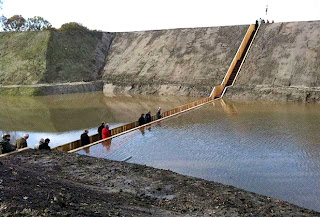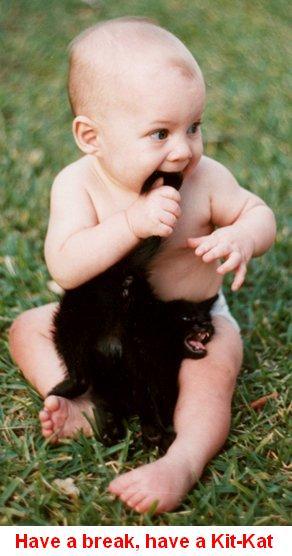How to Remove Artifacts and Avoid Istock Rejection (Part 2)
Just in case you didn’t read the title – this is part 2 of this photoshop tutorial. Here is a
link to part one. Read part one first or else you’ll have no idea what we’re talking about here.
Ok, you read part one and you have a photoshop action named “create two edge masks” saved on your computer. Now it’s time to remove artifacts and digital noise from an actual photo that you plan to submit to istock. Normally, I run noise reduction (artifact removal) as the second to last step in my photoshop workflow (sharpening is last). When you use this process for an istock photo try to do it at the end of your editing process. For the purpose of this tutorial you can use any photo you want, and you don’t have to make this your second to last step in the editing process. Try to pick a photo that has some noise or artifacts so you can see what the process is doing.
The first step is to convert your photo to the LAB colorspace. Our “create two edge masks” action only works in LAB. Converting to LAB is easy. Go to the top menu bar and click image → mode → LAB color
Now it’s time to run our “create two edge masks action”. Press the action button to reveal the photoshop actions flyout menu. Locate the action named “ create two edge masks” and click on it to highlight it (see image below). Now press the play button. That’s it. All the steps we talked about in part one run behind the scenes and magically two new channels pop up in your channels pallet at the lower right corner of photoshop.
At this point your photo might look all black with a few white lines. Don’t worry. It looks like that because photshop is displaying one of the new channels rather than your photo. To fix this go to the channels pallet and make sure you’re displaying the correct channels. The lightness channel, the A channel, and the B channel should be activated. The little eyeball icon shows which channels are active. Clicking the eyeball turns that individual channel on or off. See the diagram below – you’re channels pallet should look like this diagram.
The next step is the easiest. We’re going to create a duplicate layer. To do this press ctrl+J. That’s it. In your layers pallet you’ll see a layer called background and one called layer 1. Layer 1 should be active, meaning it’s highlighted. Your layers pallet should look like the picture below.

Now we’re going to reduce the noise in Layer 1. From the top menu bar select filter → noise → reduce noise. This brings up the noise reduction dialog box. I’m not going to lie. I’m not an expert on the noise reduction dialog box. From experience I’ve developed a technique for coming up with noise reduction settings. Each image is different so you’ll have to come up with new settings for each photo. I simply scroll the noise reduction preview window around my photo to areas where I know there is artifacting. I then tweak the settings until the artifacting disappears from the preview window. Once I find settings that seem to remove all the noise I dial the settings back until the noise pops back up again. Then I dial the settings back up again until the noise just barely disappears. The object is to use the lowest possible settings that still remove all the noise. Does that make sense to you? If you have a better method please leave a comment. If my explanation doesn’t make any sense at all to you just use settings: Strength 7 all other sliders 25. That should do the trick without over doing it.
At this point it is time to load a channel as a selection, and then convert it to a mask. Sounds super easy, right? It actually is. Here it is step by step… Go to the top menu bar click select → load selection. This brings up a dialog box. In the lower window select “edge mask” (see image below). That is the channel we created with our photoshop action. Click OK.
Your photo now should be covered in ants marching selection lines. The next step transforms this selection to the mask, and it’s ridiculously simple. Click on the create layer mask button in the layers pallet (see image below, it’s the little rectangle with the circle in the middle). That’s it! The ants marching lines should have disappeared and a mask icon should show up next to layer one.
Your layers pallet should now look like this.

For those of you that have no understanding of what layers and masks do let me try to explain very briefly what’s going on at this point. Your photo, right now, is in theory two photos stacked on top of one another. The top photo in the stack is the one where we reduced the noise. The bottom photo is the original image. What’s displayed in photoshop is the top photo (the less detailed, slightly blurred, noise reduced image). The mask we created allows the bottom photo to show through in the areas of your image where there are lots of details or edges. What you’re getting is the best of both worlds. The details in your image stay sharp and the areas of no detail get noise reduction. Noise lives in areas with little detail so we’re essentially taking the fight to the home of the noise and creating no collateral damage. This technique works better than a smart bomb and doesn’t create a foreign policy nightmare. If you have no idea what I’m talking about don’t get anxious. I’m an airline pilot not a teacher. Follow the next few steps without thinking too much and we’ll all make it home safely.
If we weren’t submitting our photos to istock I’d say we’re done at this point. But, since the istock inspection process is so anal I have to add one more step to help you keep your photos from getting rejected. Noise and artifacts tend to exist in darker areas of your image only. Why run noise reduction on the entire photo when half the image is bright enough to have no noise at all? The way to get the reduced noise layer to not show in brighter areas is by using layer blending options. Once again, this is something that sounds way harder than it is.
Before we get into the blending options menu, do yourself a favor and press ctrl+alt+0 (the number zero, not the letter O). This zooms your image to 100% size. You need to do this now because you can’t do it with the blending options dialogue box open.
To open the blending options dialogue box right click on the small image icon in layer 1 in the layers pallet. From the menu that pops up click on blending options. See the image below.

We aren’t going to get too crazy with the blending options. We’re just going to move one of the sliders. Find the top right slider. Move it to the left. What this does is allow the bottom (more detailed, but more noisy) layer to show through where the top image is lighter than tonal value to the right of the slider. Is that hard to understand? Here’s a simpler explanation: the farther left you move the slider the more noise will show through. The trick is to move the slider as far left as possible without seeing any noise in the image. This lets the maximum amount of the detailed lower layer to show through and limits the blurred upper layer to areas of noise. The best method for setting the slider is to simply play around with it and also scroll around your blown up to 100% size image. Slide that top right slider back and forth and watch the noise appear and disappear. Eventually you’ll find the perfect spot where you don’t see any noise show through, but don’t set it any further right than that. Hopefully, the two example images below can show you better than I can write. Once you’re happy with the slider’s position click OK. Note, you’re optimal slider position might be a lot further left than my example. My sample picture was taken at High ISO and very noisy to start with.


We’re pretty much done. All that’s left to do is flatten the image. Right click on the background layer and click flatten image. Before you’ll be able to save this picture as a jpeg you’ll have to convert it back to RGB colorspace (image → mode → RGB color). Also, you’ll have to delete the two extra channels in your channel pallet. Simply drag and drop them into the trash. I always forget to do that step until I try to save the photo and photoshop only lets me save it as a psd document.
That’s the end of part 2. There is a part 3 coming up. I’ll show you how to remove artifacts from blue sky. Also, I’ll show you what to do with that mysterious Sharpen Edge Channel.
If you’re a photoshop master, I am sure you have already thought up some tweaks to improve this tutorial (how about doing the noise reduction on only the noisiest channel?) Please leave a comment. I’d love to hear from you.



































